There is a group of sculptures in Budapest from the first half of the 19th century that eternalise the forms and beauty of classical Greek art. Their subject is mostly from Greek mythology as well. Depictions of muses and goddesses are common. They permeate the unique atmosphere of the age in which they were born. Only the hidden corners of the city centre in Budapest offer the same feeling today.
It is much rarer in Buda. The old sculptures to the west of the river have mainly survived from the baroque period. There are exceptions, such as the female figure of the Artemis well, better known as the Hebe well in Buda Castle. It is no coincidence that this work, which seems to be more suitable for Pest, did not have a proper place in Buda for a long time. It was always being moved.
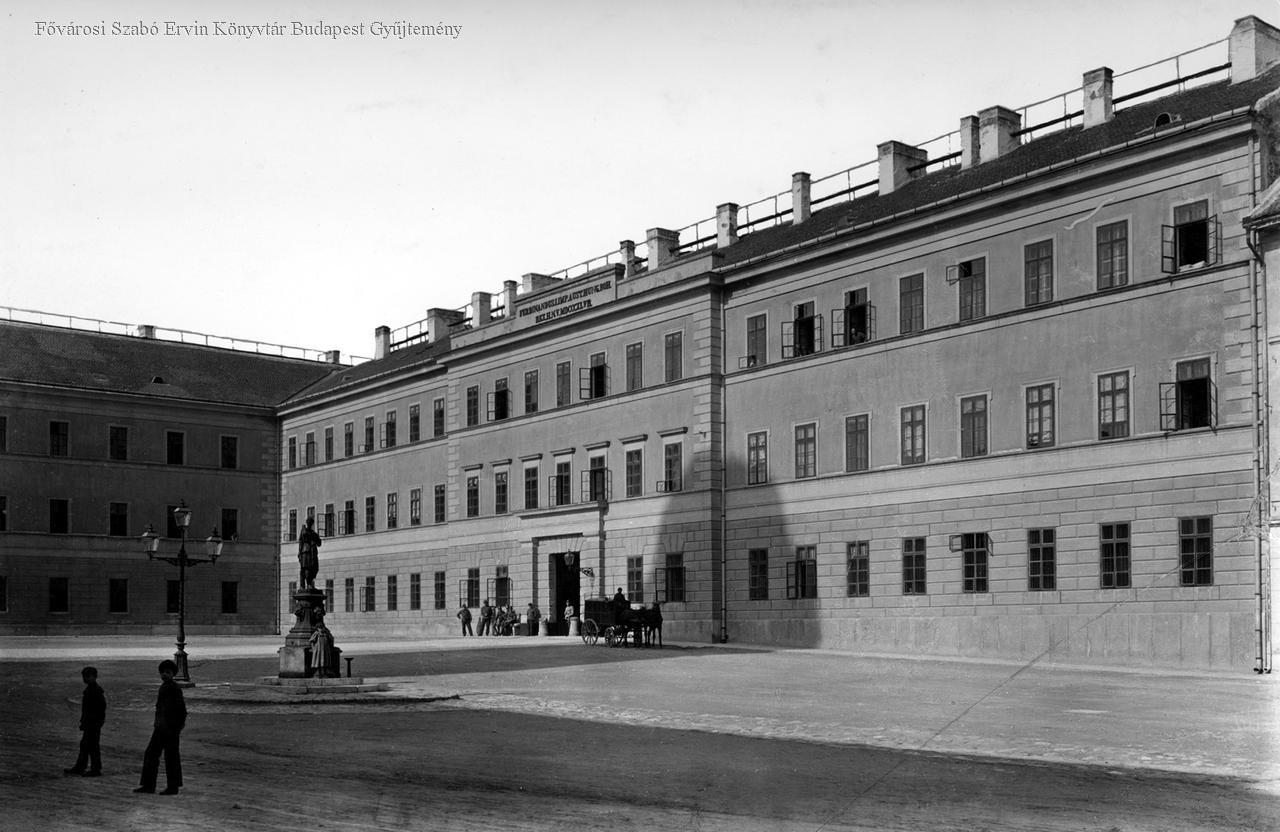
At first, the Hebe fountain was erected in the former Nándor square, today's Kapistrán square (Photo: FSZEK Budapest Collection)
Some explanation is needed as to why the well has two names. The classical statue that served as a model for the well statue – a work of the Greek sculptor Praxiteles, who lived between 370–325 BC – is in the collection of the Louvre. The ancient statue depicts the goddess Artemis, but the common name of the statue in Buda is Hebe Well.
In Greek mythology, Hebe is the goddess of youth, the child of Zeus and Hera. She is portrayed in a sleeveless dress as an eternally youthful girl. Hebe is also often referred to as the cupbearer of the gods, who prepared bath water for her brother, Ares. Therefore, she is a popular figure for wells. Artemis is also a figure of Greek mythology, the child of Zeus and Leto, the twin sister of Apollo. In ancient times the cult of Artemis was very widespread, and even the Bible notes its existence.
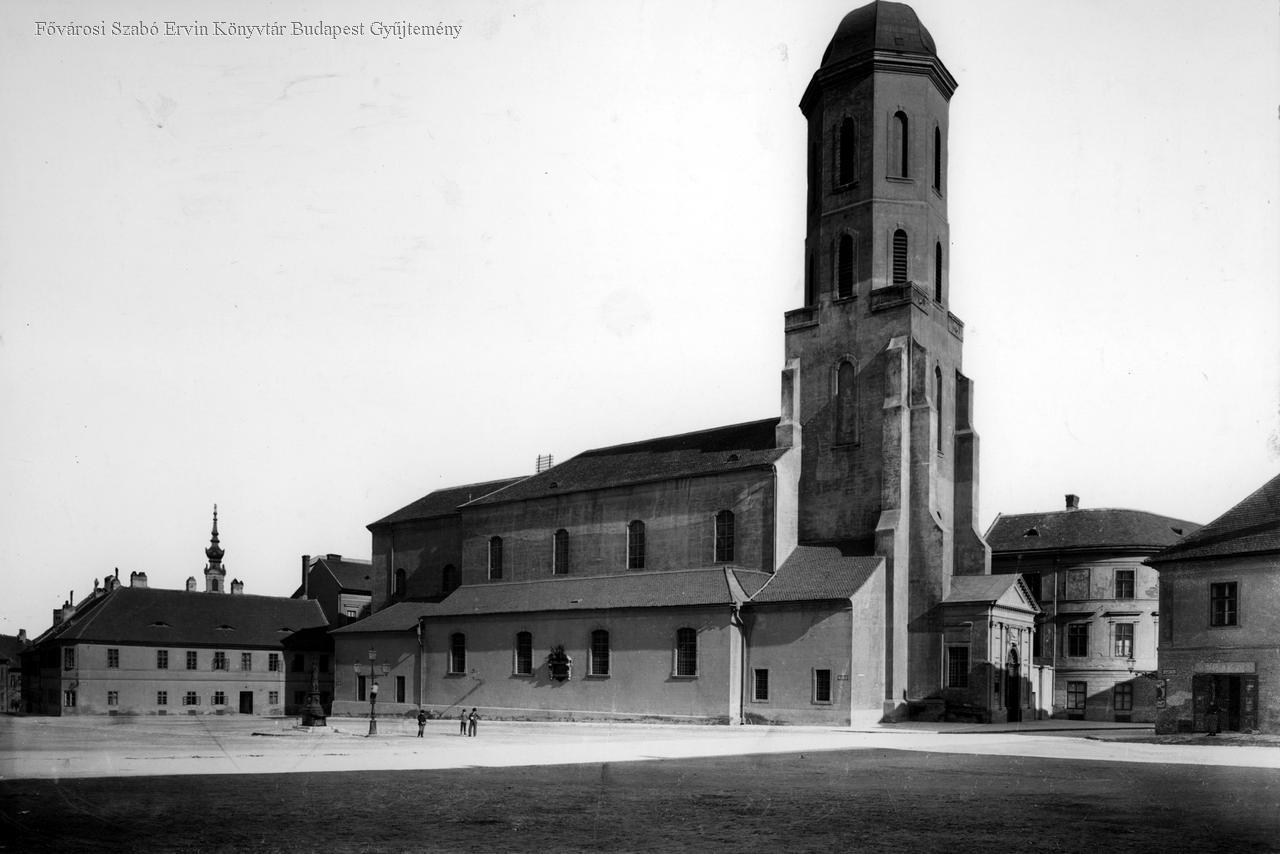
The well statue stood in the former Nándor Square until 1923, near the Church of Mary Magdalene. Today it is nearby: it stands on the site of a former residential house behind the Magdolna Tower (Photo: FSZEK Budapest Collection)
Unfortunately, the creator of the modern version of the antique sculpture is unknown. Its pedestal that hid a well was made of cast iron and adorned with waterspouts styled as lion's heads. It was originally a “double-basin” well, from which water flowed into a bowl at the front and back. Although it is well-known that the statue depicts Artemis, its traditional name cannot be ignored, especially in light of the lively cult in honour of Hebe that sprang up in Hungary in the 19th century.
There were statues and wells of Hebe in several places, such as the work of József Huber in the second courtyard of the Pest County Hall in the centre of Budapest, and the still-standing Hebe well of the French metal foundry owned by Antoine Durenne in Nagyszalonta, Partium.
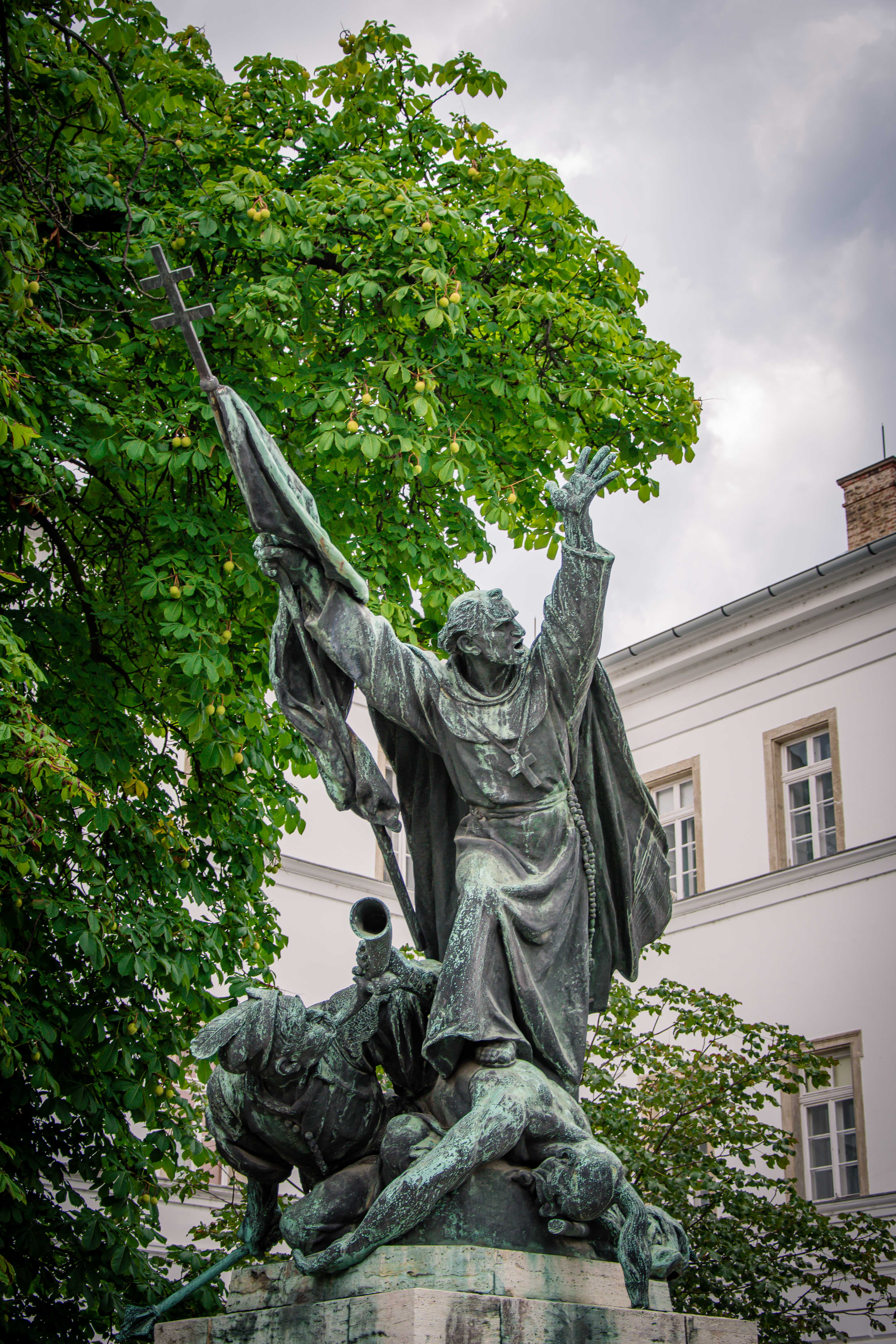
Earlier, the Hebe Fountain defined the view of Nándor Square (now Kapistrán Square), today the statue of St. John of Kapistrán dominates the area. The work of József Damkó was inaugurated in 1922 and moved west of the well (Photo: Róbert Juharos / pestbuda.hu)
The Hebe fountain in Buda Castle is usually said to have been erected in the 1850s. However, the statue probably ended up on Nádor Square a few decades later. Cast-iron construction dates back to the 1870s, and it is also a known fact that a well was established in the area of today's Kapistrán Square in 1873 to replace the well of the nearby Ferences Square, which had become private property due to the reconstruction of the Franciscan monastery. Based on this, the well stood here for about 50 years. Meanwhile, by 1882, as the Budaújlak waterworks entered operation, the water supply of the Castle was transitioned to a new aqueduct; thus, the old wells lost their significance.
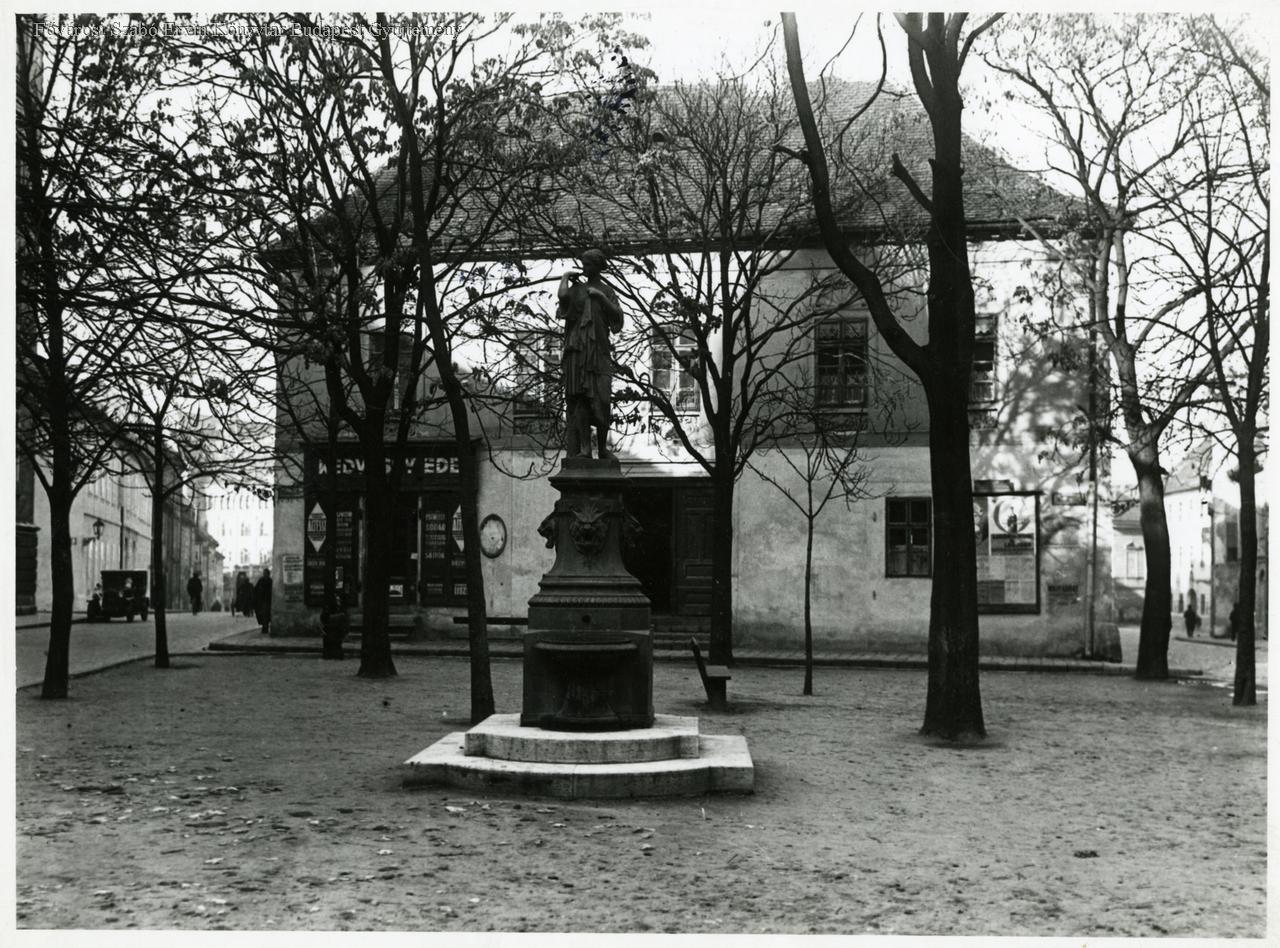
The well at its second site: Iskola Square, which was already densely planted with trees, today's Hess András Square (Photo: FSZEK Budapest Collection)
A new statue was placed on Nándor Square in November 1922. The statue of St. John of Kapistrán, the work of József Damkó, was unveiled. The Hébé well was moved to Iskola Square in 1923 (later renamed Ince Pápa Square, and today it is named after András Hess).
The square had just been renovated: the remaining tower of the medieval Dominican Church of St. Nicholas was restored by Kálmán Lux in 1924, and in 1930 a copy of the famous King Matthias Monument in Bautzen, Silesia was placed on the tower. The Hebe well, on the other hand, spent little time here. It seems that the statue of the Greek goddess had no luck with the saints: while it lost its previous place to Saint John of Capistran, it was moved from its new place due to a monument in honour of Pope Innocent XI. . Interestingly, both sculptures were the work of József Damkó.
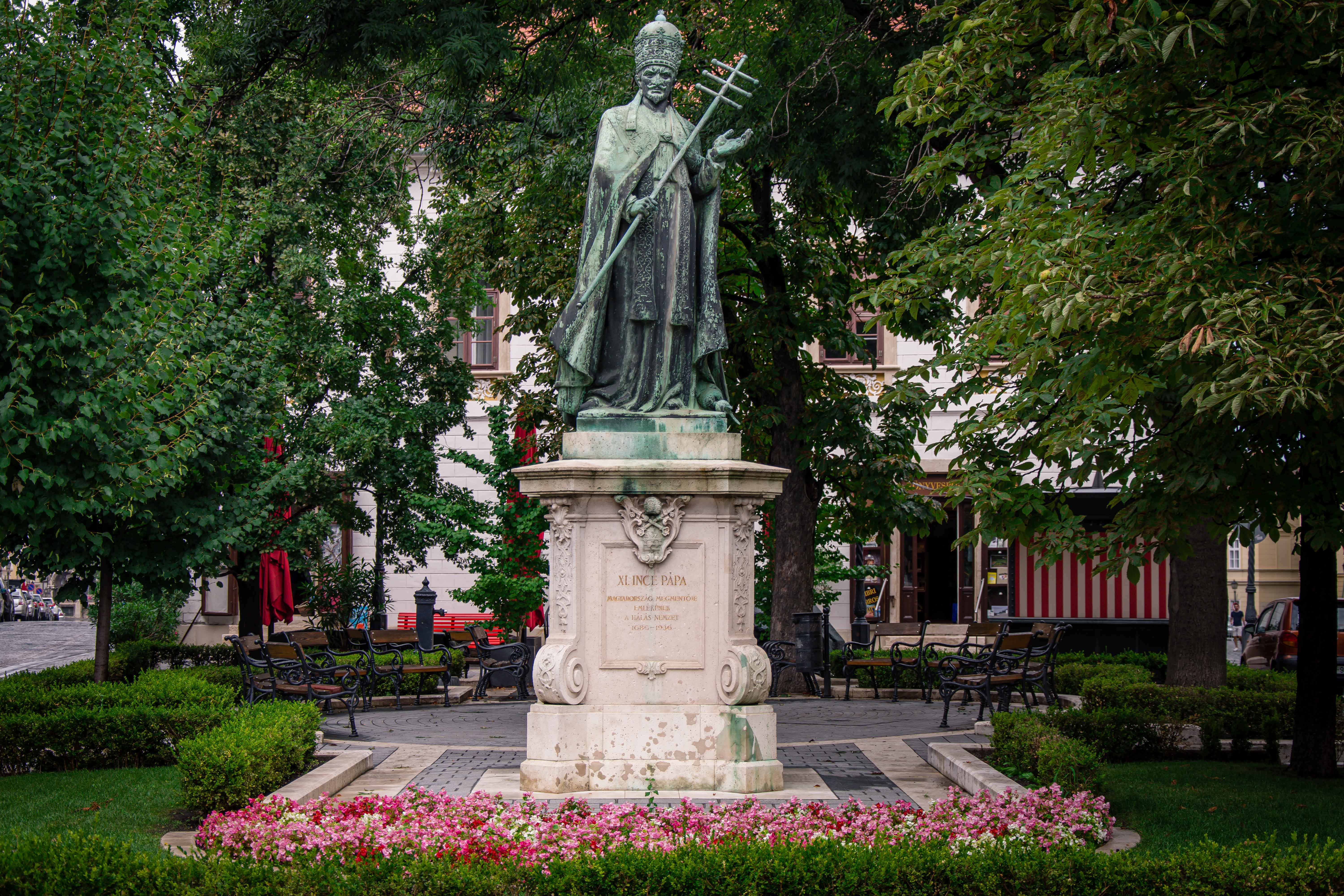
Blessed Pope Innocent XI on the green of today's Hess András Square. The work by József Damkó was unveiled in October 1936 (Photo: Róbert Juharos / pestbuda.hu)
Pope Innocent, like Capistran, also helped the Hungarians in the fight against the Ottomans. His statue was erected on the site of the Hebe fountain to honour the 250th anniversary of the liberation of Buda from Ottoman rule in 1936. The pope's militant bronze figure by József Damkó has been in the square ever since.
The once important, thirst-quenching, Hebe well had a sad fate. First, she was taken to the yard of a nearby school building in pieces. The unfortunate state was noticed by several people and was also covered by the press. In June 1940, news came to light that the well statue would be re-erected in the Castle. The 30 June 1940 issue of the Keleti Újság, published in Kolozsvár, also indicates the exact location of the statue: “The management of the Hungarian capital decided to erect the so-called Hebe well. The Hebe Fountain stood on Iskola Square in the castle, and when the statue of Pope Innocent was placed there a few years ago, the well was dismantled and has been lying in a warehouse ever since. The valuable historical monument is now being set up again in the Castle area, on the corner of Tárnok Streat and Balta Alley.”
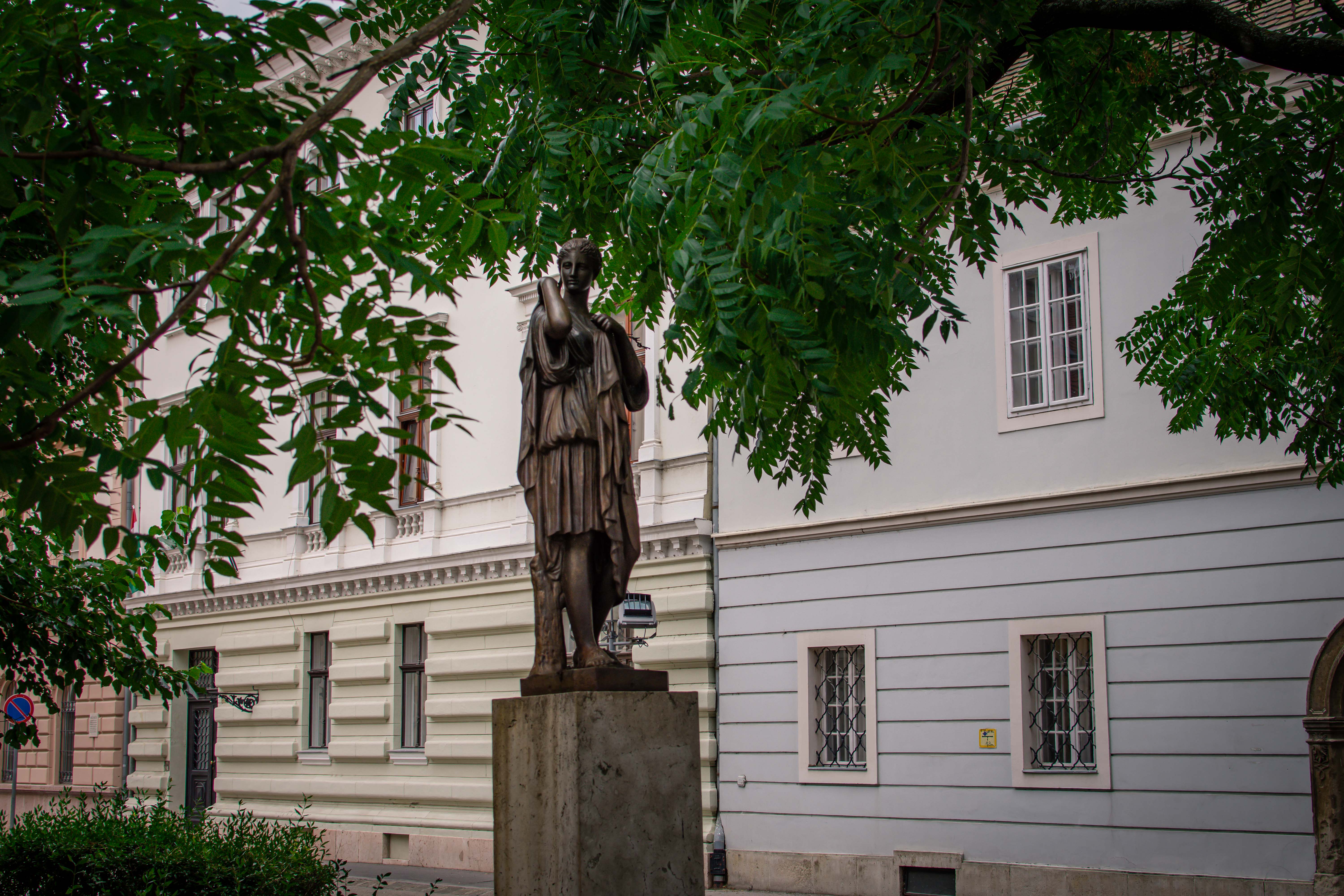
The beautiful well statue was moved to its current location in 1967, on Úri Street in Budavár, which is very close to its first site (Photo: Róbert Juharos / pestbuda.hu)
This plan did not materialize in the end, but it seems that the decision-makers did not forget it, as another well statue was indeed erected at this point in the Castle. The beautiful female figure created by the sculptor Pál Pátzay has stood in the place mentioned in the quote since 1975.
The Hebe well remained in the school building on Pope Ince Square for a long time. The building was severely damaged during the siege of Budapest in 1944-1945 when the pedestal of the well statue was unfortunately destroyed. After the war, the statue was transported to the castle of Nagytétény. More than a decade later, at the end of January 1957, the press reported on new plans for the statue: it was planned to be restored, and its place was set at its present-day location, “the small area next to Kapistrán Square.”
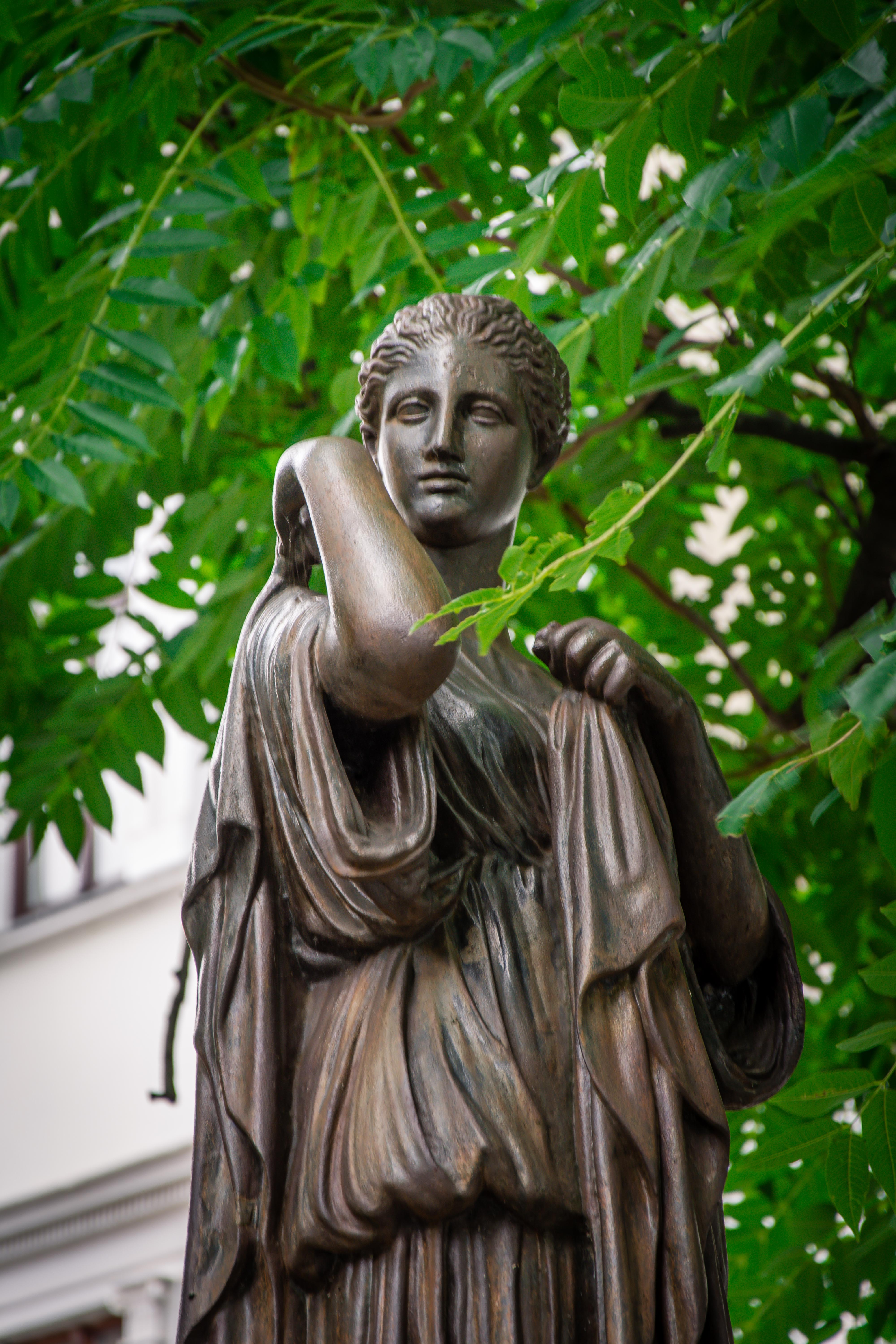
The Hebe fountain reflects the Greek pure ideal of beauty (Photo: Róbert Juharos / pestbuda.hu)
Of course, it took another ten years to implement the plans. It was placed at its current site as part of a comprehensive concept. At the end of Úri Street, at the foot of the renovated Magdolna tower, the cosy little space called the “piazette” where the statue stands was created. The sculpture was placed on a simple, modern pedestal, but its well function has been preserved, and water still trickles from it. The inscription on the pedestal nicely summarizes the long history of the sculpture:
“The well statue was made based on the statue of Artemis by Praxiteles. The former well stood on Kapistrán Square for about half a century. Her old name is Hebe Fountain. From 1923 to 1936 she stood on András Hess Square. Only the statue remains of the demolished well. Erected by the Budapest Socialist Council, 1967"
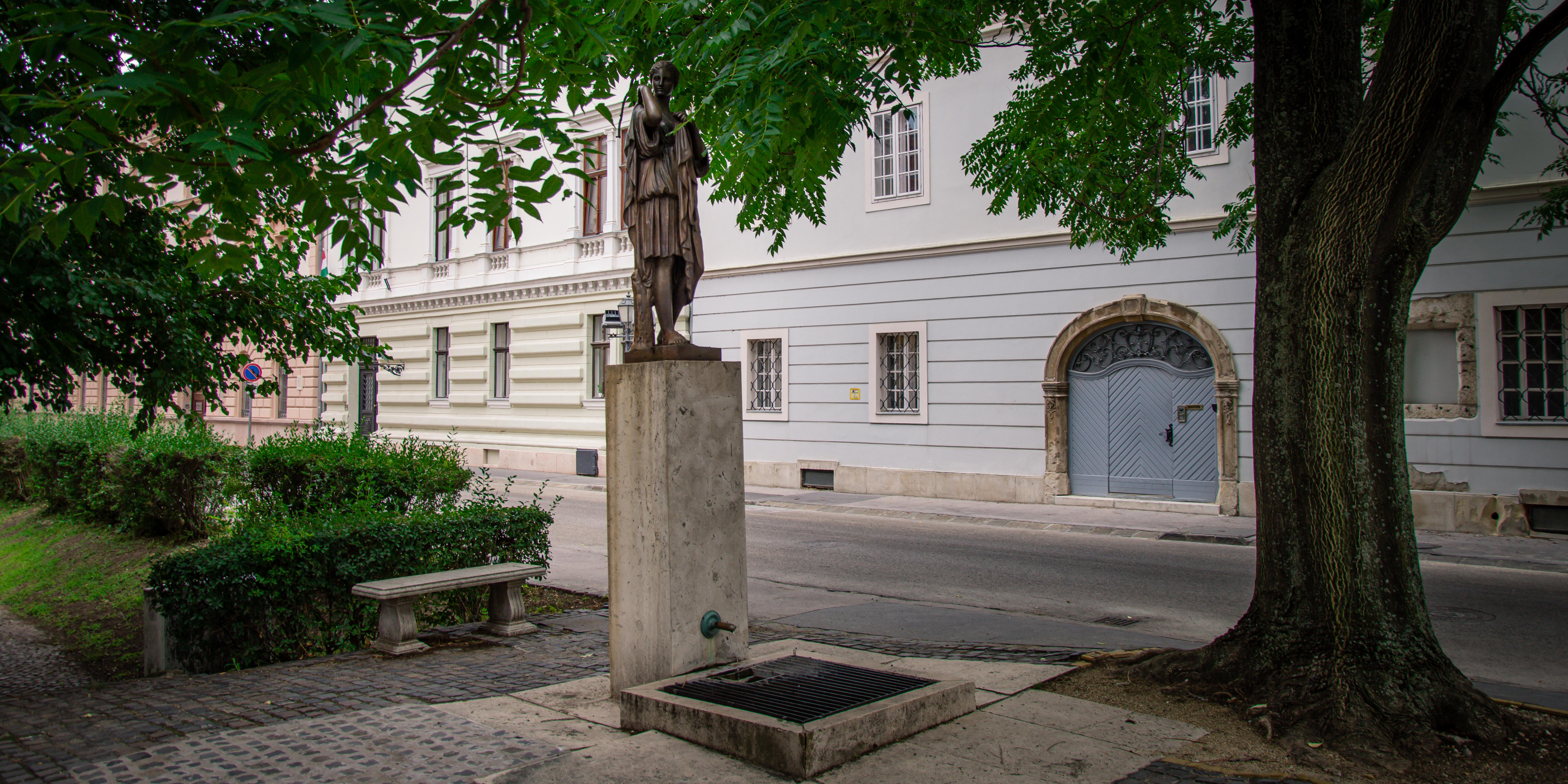
At the end of Úri Street, at the foot of the Magdolna Tower, a cosy little space, called the “piazette”, was created, where the well statue stands. To the right stands 70 Úri Street (Photo: Juharos Róbert / pestbuda.hu)
The Hebe Fountain has been in place for more than half a century. Although the many sights of the Buda Castle will always be the "protagonists" of the historical area, the classical beauty of the well statue is no small thing – even in these surroundings. This saved slice of our past has finally found a home.
Cover photo: The Hebe Fountain next to Magdolna Tower, at the end of Úri Street (Photo: Juharos Róbert / pestbuda.hu)

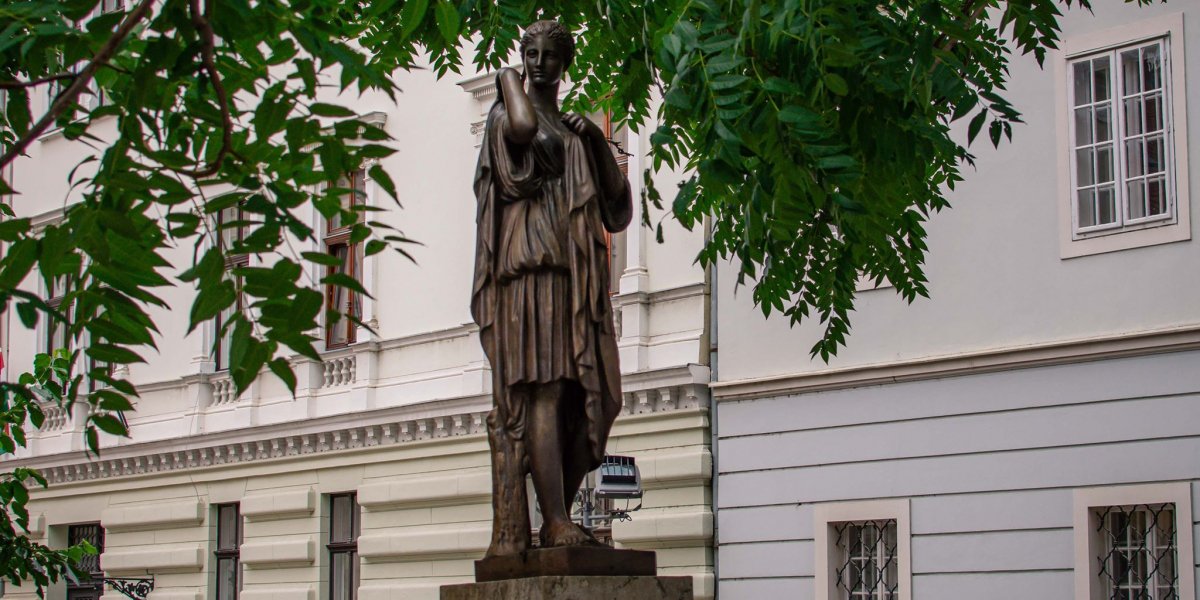






Hozzászólások
Log in or register to comment!
Login Registration